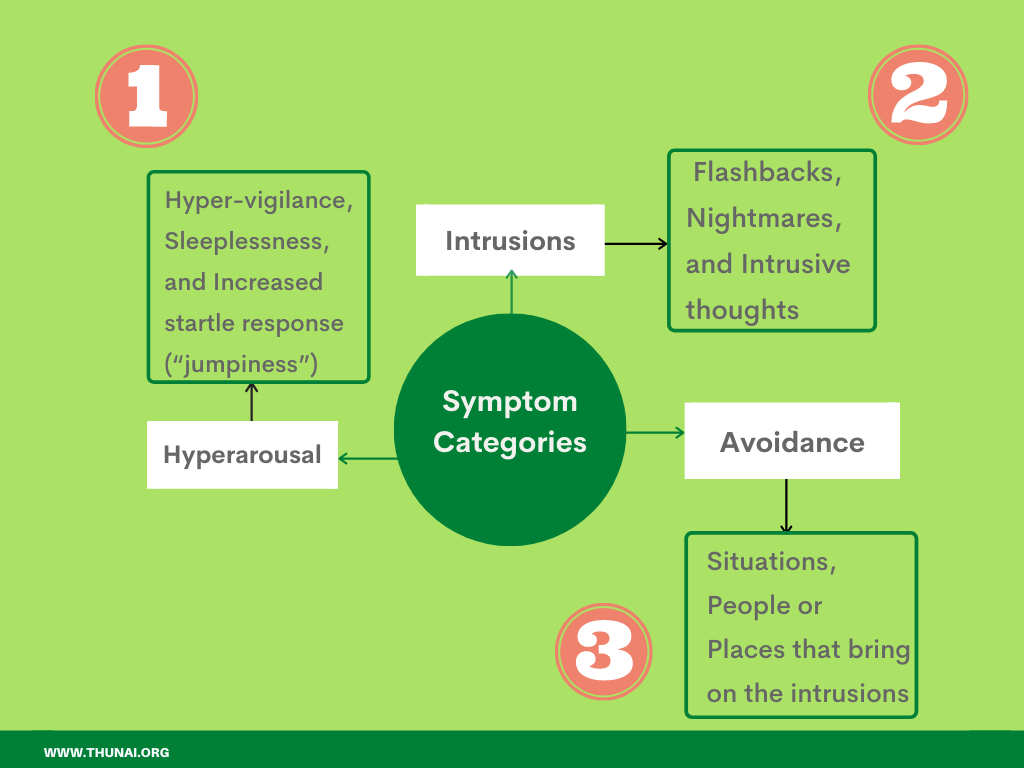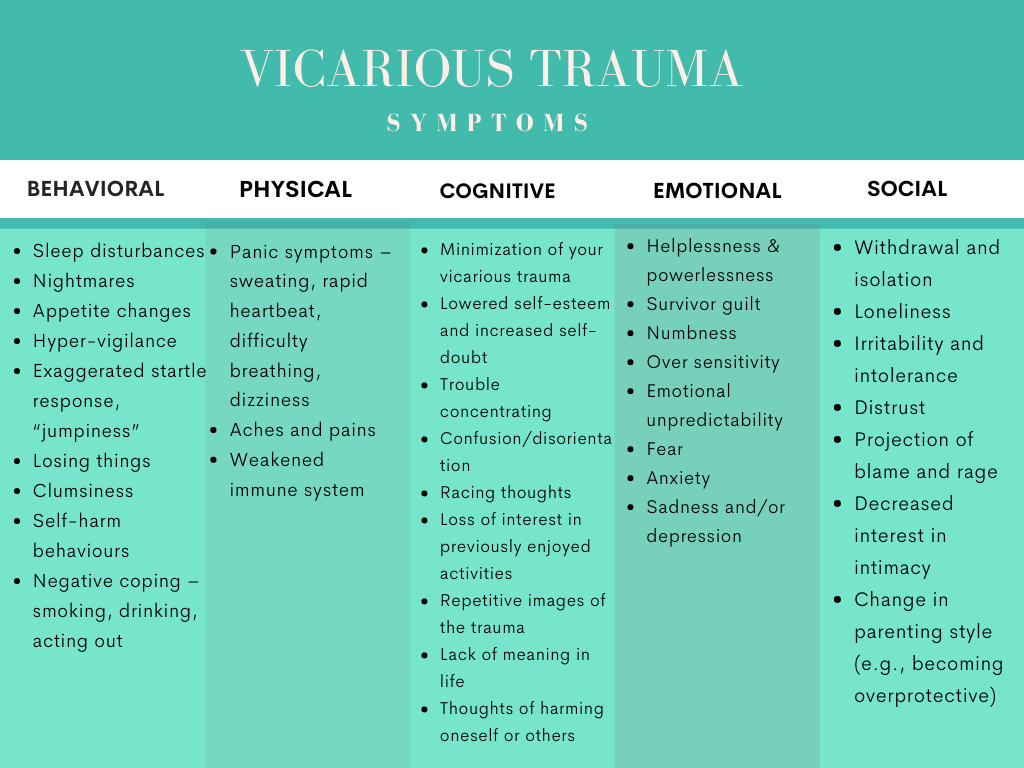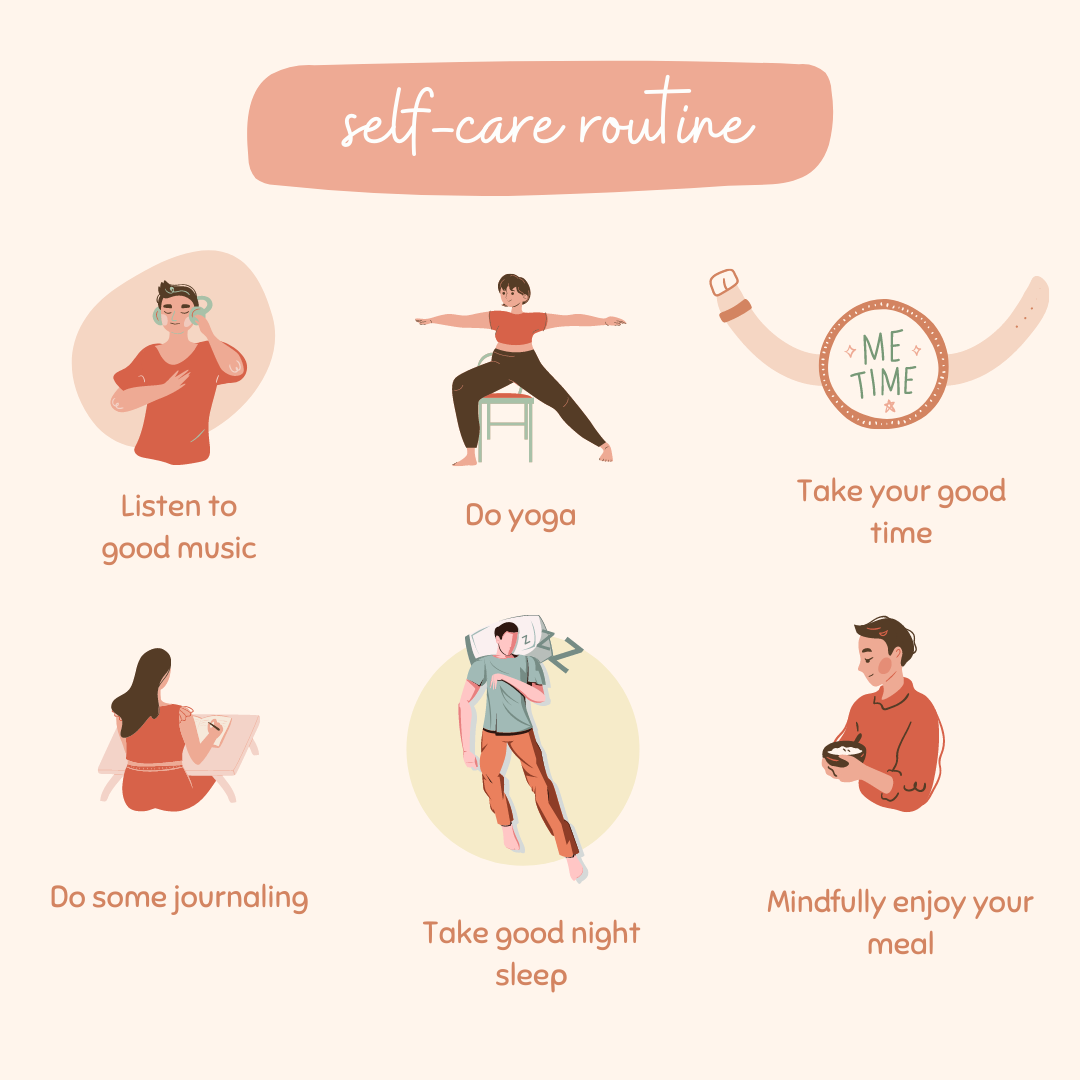Health care providers and family caregivers often hear detailed and harrowing stories about the unfair, undeserved and often unimaginable traumatic experiences that their clients / loved ones have endured. As a result, they are at risk for vicarious trauma, also known as secondary traumatization, secondary stress disorder, or insidious trauma.
What is Vicarious Trauma?
Vicarious trauma occurs when an individual who was not an immediate witness to the trauma absorbs and integrates disturbing aspects of the traumatic experience into his or her own functioning. Friends, family members and spiritual leaders who are providing support to the survivor are also at risk for vicarious trauma. Some precursors to vicarious trauma that you might hear about are compassion fatigue or burnout.
Vicarious trauma often carries many of the same symptoms as first-hand trauma or post-traumatic stress disorder. These symptoms are usually grouped into three broad categories:

Symptoms of Vicarious Trauma

What you can do…
Monitor yourself. In order to stave off vicarious trauma, it is important to keep track of your levels of “burnout” or “compassion fatigue”. There are several professional assessments aimed at these areas, including the Professional Quality of Life Scale, which is available online free of charge.
Take care of yourself. Just as we tell our clients, it is important for us to get enough rest, eat balanced and healthy meals and maintain a regular physical exercise routine.
Take time for yourself. Resist the urge to work without a break. Your mind and spirit need this respite. It is also critical that we take time outside of work to engage in enjoyable and restorative activities.

|
|

 THUNAI
THUNAI